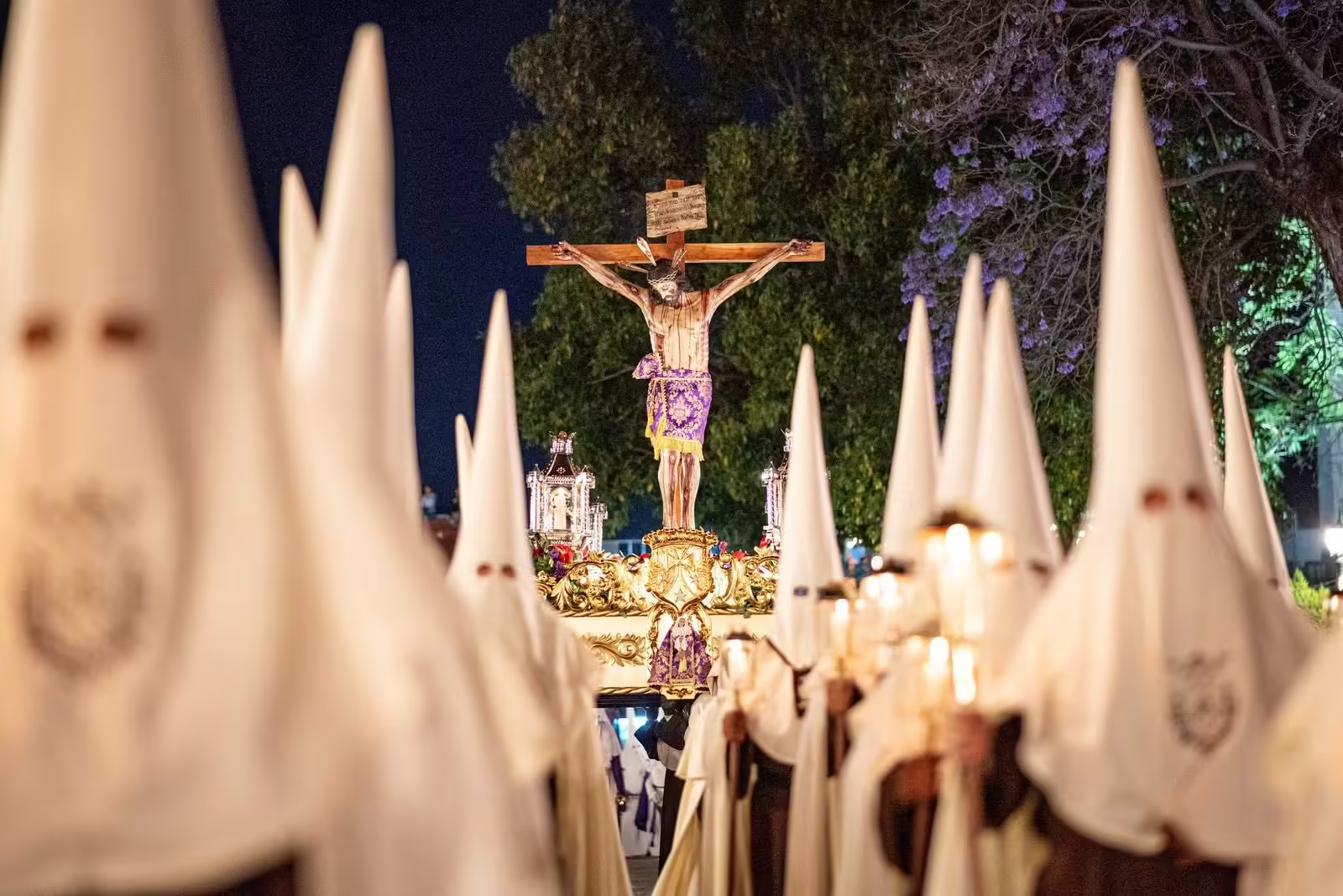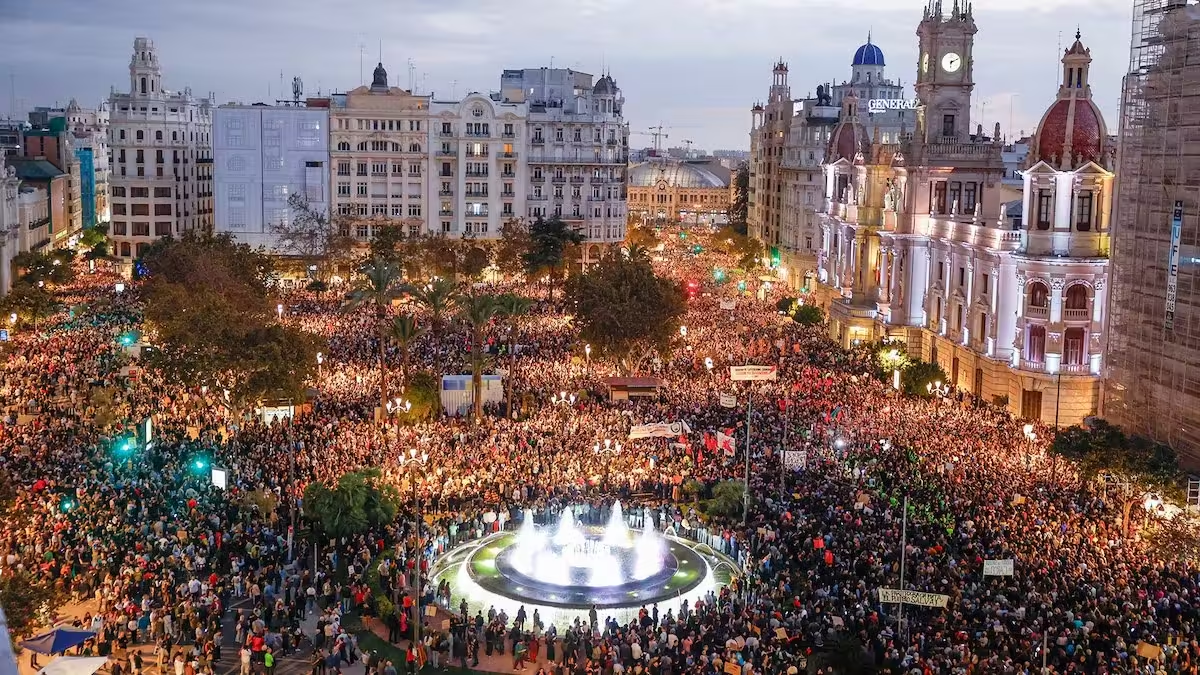What to Expect on Good Friday in Spain
Good Friday, or Viernes Santo, is one of the most significant days of the Holy Week (Semana Santa) celebrations across Spain. But what exactly happens on this day? What are the main processions? What food is eaten? And how can you manage the crowds and find out about road closures? Let’s break it down so you can make the most of this powerful experience.
What Happens on Good Friday in Spain?
Good Friday in Spain is marked by a quiet, reflective mood and solemn traditions. It marks the day of Jesus Christ’s crucifixion, and throughout the country, especially in southern Spain, the streets are filled with elaborate religious processions.
The pasos (large religious floats depicting scenes from Christ’s last moments) are carried through the streets, often by nazarenos, penitent members of the brotherhoods wearing hooded robes. These processions can last for hours and often take place after sundown. Some towns, like Sevilla and Málaga, are famous for their dramatic, emotionally charged processions.
Look out for the cofradías (brotherhoods), which organize these events. They wear distinctive robes and often carry candles or incense. The atmosphere is one of reverence and quiet contemplation, with the crowd usually moving in respectful silence.
Good Friday Processions Across Spain
Here are some of the most iconic ones to look out for:
La Madrugá – Sevilla, Andalucía
Sevilla pulls an all-nighter for La Madrugá, starting on Holy Thursday and continuing into the early hours of Good Friday, and it is considered the highlight of Semana Santa here. It features the city’s most famous brotherhoods, including La Macarena and El Gran Poder. The streets fill with people from midnight onwards, watching as massive floats glide through the night, carried by silent, hooded figures. Flamenco-style laments are sung from balconies, and the atmosphere is both electric and deeply moving.
Procesión de los Pasos – León, Castilla y León
Held during daylight on Good Friday, León’s Procesión de los Pasos is a breathtaking display of devotion. Dozens of intricately carved wooden floats, some centuries old, are paraded slowly through the city centre. Thousands come to see it, and the atmosphere is deeply respectful.
Santo Sepulcro: Region of Murcia
In Murcia, one of the most meaningful Good Friday processions is the Santo Sepulcro, organised by one of the city’s oldest brotherhoods, founded in 1570. It’s the official procession of the city, and ahead of the main float, you’ll see representatives from all the other brotherhoods and local institutions walking in solemn respect. It’s a moment full of tradition and community spirit, quiet, dignified, and definitely worth seeing.
Procesión de las Turbas – Cuenca, Castilla-La Mancha
This early morning event is unlike anything else. Known as the ‘procession of the drunks’ (turbas), participants shout and clash drums and trumpets to mimic the mocking of Christ by Roman soldiers. It’s loud, theatrical, and unforgettable, and yes, it starts at a very unsociable hour!
8⃣ Procesión de las Turbas [Cuenca]
— Tendencias de España 🇪🇸 (@viralenspain) April 16, 2025
Conocida popularmente como las Turbas, tiene lugar en la madrugada del Viernes Santo y en ella se representa la burla que sufrió Jesús camino de la cruz. pic.twitter.com/wFTfeXeh6e
The Food of Good Friday
In Spain, food plays a key role in religious and cultural celebrations. On Good Friday, many people fast or eat simple, non-meat dishes in accordance with religious traditions.
One dish you’ll likely encounter is potaje de vigilia, a hearty chickpea stew typically prepared with spinach, cod, and hard-boiled eggs. This dish is both filling and symbolic of the fasting practices. You may also find torrijas, which are Spanish-style French toast soaked in milk, sugar, and cinnamon, a sweet treat to balance the solemn atmosphere of the day.
What Else Happens on Good Friday in Spain?
Aside from the processions and food, Good Friday in Spain offers plenty of other experiences. In some towns, there may be events often linked to the religious themes of the day. In cities like Sevilla and Granada, expect to see art exhibitions and open-air religious events, all contributing to the heavy cultural atmosphere.
People also gather with family and friends, making it a chance to witness Spain’s strong sense of community during a shared time of reflection.
What Should You Keep in Mind?
Road Closures: Expect some disruption! Major processions mean that many roads in towns and cities will be closed or blocked off for hours. This can be tricky if you need to travel, so check your town or city’s website for specific details on closures. Local town halls (ayuntamientos) often have the best up-to-date information. If you’re driving, it’s best to plan ahead and use public transportation if possible.
How to Act: Good Friday is a deeply reverent day. While it’s great to enjoy the spectacle, remember to be respectful. Keep noise to a minimum and try to avoid using flash photography during the processions. It’s not just about watching; it’s about participating in a centuries-old tradition with the right attitude.
Should Kids Go to the Processions? Good question. While the processions can be mesmerizing, they can also get crowded and last for hours. If you have young children, consider whether they will be able to handle the long duration and the crowds. Many families do bring their kids, but others prefer to stay at home or enjoy the festivities from a distance. Check your local schedule to see if there are any kid-friendly events that might suit your family better.
What Happens if There’s Bad Weather?
Spain is known for its sunny weather, but during Semana Santa it’s been known to take a turn. If the weather doesn’t cooperate, whether that’s rain or high winds, some processions might be delayed, shortened, or even canceled. The organizers often have contingency plans, and they’ll announce any changes on local news channels, social media, or through the town hall. So, keep an eye out for updates if the weather looks iffy!
Where to Get Detailed Information?
If you want specific times, locations, and processions happening in your town or city, your best bet is to check in with the local ayuntamiento (town hall). They typically publish detailed schedules for Good Friday events, as well as any special instructions related to road closures, parking, and other logistics. You can also check social media pages for updates from local organizations, as they’re often quick to share last-minute changes.
What are your Good Friday plans?
Whether you’ve experienced Spain’s Good Friday traditions before or this is your first time, we’d love to hear about it. Have you ever stayed up for La Madrugá in Sevilla? Or watched the Spanish Legion in Málaga? Maybe you’re planning a quiet day with family, or heading into town to catch a local procession. Let us know your plans, memories, or tips in the comments or on our socials, everyone’s experience adds something special to this time of year.
And don’t forget: Good Friday is a national bank holiday in Spain. That means banks and most businesses will be closed. In big cities, you may find some shops and cafés open in tourist areas, but in smaller towns and villages, even some bars and restaurants may shut for the day, especially in the afternoon or during procession hours. Best to check ahead and make any reservations early.
Wherever you are, take a moment to soak up the atmosphere, whether that’s in the quiet of a village church or a city street lit by candles. Semana Santa only comes once a year; make the most of it.
Share this content:




Post Comment